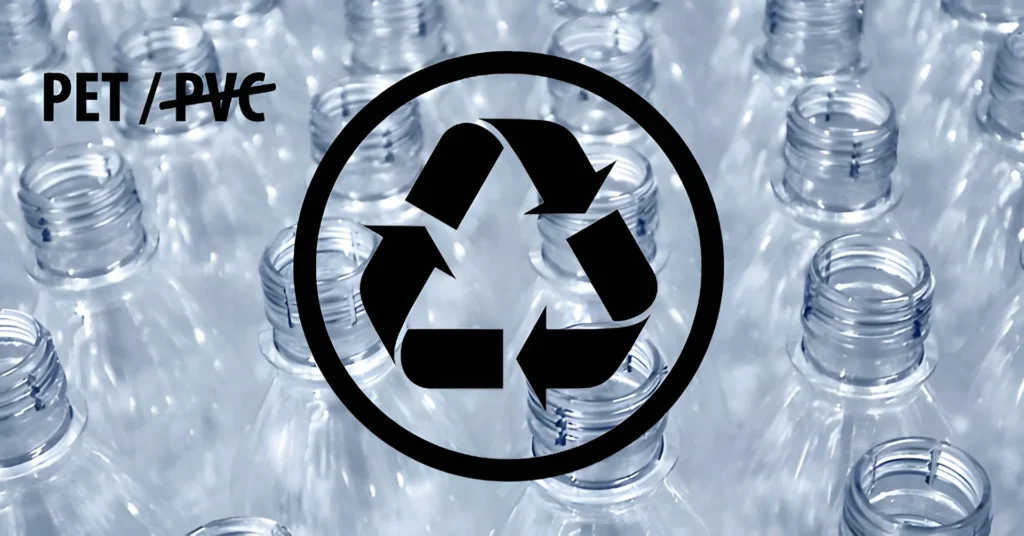Polyvinylchloride (PVC), identified by plastic code #3, is one of the most problematic contaminants in the PET recycling industry. Even in minimal concentrations, PVC can cause significant problems during the processing of post-consumer PET resins into new products. For illustration: PVC contamination can have negative effects at concentrations as low as 50 parts per million (ppm).
%%
This 50 ppm represents an extremely small amount—only 0.05 kg of PVC plastic within 1,000 kg of PET flakes, or 0.005% by weight. Despite this seemingly negligible concentration, PVC can form acids that physically and chemically break down PET resins, making them brittle and giving them a cloudy tint—two of the most important properties for PET products: clarity and tensile strength. Moreover, chlorine gases are released during the recycling of PVC, posing another significant hazard.
%%
Sources of PVC Contamination in PET Recycling
- %%For PET washing and recycling facilities, it is essential to control the concentration of PVC in the PET flakes they produce. The tolerances for PVC are primarily determined by the end use of the recycled PET. While some applications can tolerate higher PVC levels, high-quality products, such as top-quality polyester fibers, require PVC levels much lower than 50 ppm. To meet the strict requirements of these high-quality applications and obtain premium prices, PET recyclers must make extra efforts to remove PVC from the PET flakes. Understanding how PVC enters the PET recycling stream is the first step in this process.
- %%PVC contamination generally comes from four primary sources:
- %%PVC Bottles That Look Like PET
- %%: These bottles leave a white "crease" marking when they are crushed flat, making them identifiable and removable by trained sorters.
%%
PVC Safety Seals on PET Bottles
%%: Some PET bottles, such as mouthwash bottles, have PVC safety seals that must be removed before the granulation process.
%% PVC Liners in Bottle Caps and Closures %%
- : Although this is not common in the US, occasionally bottles with PVC liners appear in the recycling stream.%%
- PVC Labels on PET Bottles%%
- : PVC labels wrapped around PET bottles contribute to contamination and must be removed before processing.%%
Effective PVC Removal Techniques in PET Recycling %% While recycling machines play a crucial role in filtering PVC from PET bottles, manual sorting remains one of the most effective methods for removing contaminants. Experienced sorters can visually identify and remove PVC bottles, but technology has improved the efficiency of manual sorting.
%%
UV Lighting for Improved Sorting Efficiency
%% : A promising innovation is the use of ultraviolet (UV) light to assist in sorting. When PET bottles pass under UV light, they absorb the rays and emit a characteristic blue fluorescence. PVC bottles, due to certain additives, often emit a green or yellow fluorescence, making them easily distinguishable. This method has increased sorting accuracy to 99%. However, due to the potential danger of prolonged UV exposure, sorters must work in shifts of 2 hours to ensure safety. %% In addition to manual sorting, automatic sorting systems are becoming increasingly popular, especially due to rising labor costs. These systems are usually categorized into three types: %%
- Optical Sorting Systems%%
- : These use advanced cameras and sensors to detect PVC contamination based on visual characteristics.%%
Conclusion
Transmissivity Technology Systems
%%


